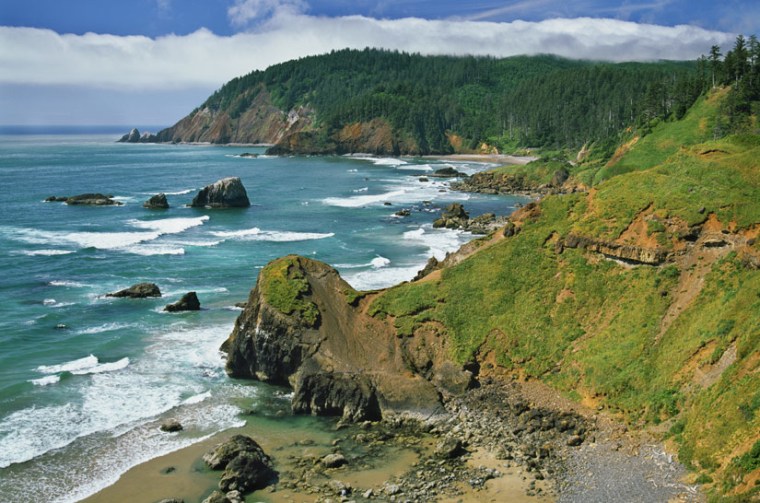A new 6,500-year record of megathrust earthquakes in the Pacific Northwest pieced together from lost coastal marshes and offshore sediments is providing the clearest picture yet of the quake and tsunami dangers for along the 750-mile long Cascadia subduction zone from Northern California to British Columbia.
By bringing together the data from the ocean and coastal marshes into a geophysical model that takes into account how the crust bows upwards between quakes, the researchers have confirmed that the northern portion ruptures violently on the average of once every 480 years. The southern portion along Oregon and California breaks every 230 years on average.
The last rupture was a Sumatra-style, simultaneous unzipping along entire length of the hazardous subduction zone in 1700.
"(This) paper is important because it is an excellent synthesis of two widely divergent fields of Earth science," said Alan Nelson of the U.S. Geological Survey.
One field is what's called microstratigraphy, which is what allowed for the deciphering of the tidal marshes' sediments. The other is that of geophysical computer modeling, which shows how the Pacific plate is sliding beneath the North America plate.
"Compiling all that data for what happened along the coast during past earthquakes -- how much the coastline dropped down or was uplifted in different places along the coastline -- allows us to constrain what happens on the fault plane as the two plates finally move past each other after being stuck for hundreds of years," said Lucinda Leonard of the Geological Survey of Canada's Pacific Geoscience Centre.
Her paper on the matter is in the latest issue of the Geological Society of America Bulletin.
Typically the continental North America plate jumps west 32.8 to 98.4 feet over the oceanic Juan de Fuca plate during the Cascadia megathrust earthquakes. That jump releases a lot of stress that is stored in the upward warping of the coastal edge of the North American plate — similar to how a stick bows in the middle when pressed from both sides.
When the ruptures occur, the pressure is released and the North American plate flattens out again, causing the marshes and even forests on the stressed crust to drop in elevation.
"These marshes have a record of about 14 past earthquakes where the upper levels of the marsh dropped down and were covered by sand (the tsunami deposit)," said Leonard. "The cycle repeats and repeats itself."
This sort of site-specific data, when put into a regional model, could be very helpful in understanding what is to come in the next big quake.
"We learn where it is that the most rupture happens, and how large that rupture is," she said. "This helps us to know how bad the shaking will be during future earthquakes, and where it will be worst, and also contributes to our understanding of how large the tsunamis may be and how they might vary in size along the coast."
It also confirms that sometimes the entire subduction zone ruptures, as it did in 1700. Sometimes just the southern portion breaks. That suggests that the southern portion, with a history of rupturing every 230 years on average, may be due for another big quake.
"Certainly it could be another 200 years or it could be tomorrow," Leonard told Discovery News.
